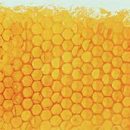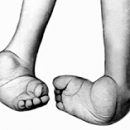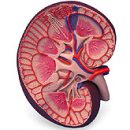Today, the exact cause of the development of the disease of the Pingzhet is still unknown. However, some theories for this expense from modern doctors have. Doctors also know about the risk factors for the appearance of this disease. Want to know about it and you? Then just read this article.
Content
Although the cause of the disease of Pedge is unknown, the primary defect is, apparently, an anomaly of osteoclasts (cells that destroy bone tissue during its restructuring).
Messages about virus-like inclusions inside osteoclasts in bones affected by PEDGET disease, suggest the idea of viral etiology. It was assumed that the etiological factors are measles virus, respiratory syncytial virus and dog plague virus.
The detection of virus-like inclusions, however, may simply reflect the fact that the bone affected by the PEDGET disease is probably more susceptible to infection with such viruses.
 In the disease of the PEDGET, the selective lesion of one bone may be observed, only in one place of the skeleton (about 20% of patients) or multiple bone defeat with the involvement of several different skeletal sites.
In the disease of the PEDGET, the selective lesion of one bone may be observed, only in one place of the skeleton (about 20% of patients) or multiple bone defeat with the involvement of several different skeletal sites.
Typically, the localization of the lesion is characteristic of:
- pelvis;
- hips;
- skull;
- tibia;
- shoulder.
Less often involved (less than 20% of cases) bones of forearm, clavicle, blades and ribs.
The frequency of cases of the disease of the PEDGET is changing with age, gender and geographical situation.
Although Pedge's disease can be more young people, most often it meets in patients aged over 50 years. Men This disease amazes more often than women (in relation to approximately 3: 2).
Although there is no certain inheritance nature of the disease, a significant number of patients with this disorder (12% in one large study) report defeat and family members.
Pedget disease is more common among the population of Eastern and Northern Europe and in areas where Europeans immigrated (for example, United States of America, Australia, New Zealand and South Africa). This disease is rarely found in Scandinavia, Asia and Africa and in African Americans.
Currently, a certain course of treatment of PEDICH disease does not exist, but some drugs are used to reduce the increased rate of resorption of bones by cells that destroy bone tissue during its restructuring.
Symptomatic treatment should also include such therapeutic impact methods, such as analgesics, nonsteroidal anti-inflammatory facilities, canes, hearing aids and surgical intervention.
The main indication for treatment is the presence of symptoms. However, not all symptoms can be eliminated. Usually it is possible to affect the pain in the bone and certain neurological compression syndromes. It is unlikely that the hearing has improved during treatment, bone deformations and mechanical disorders of the joint function have been eliminated.
Additional testimony to the treatment of peonge disease are the prevention of local progression of the disease and its complications, planned surgical interference in the place of lesion and extensive lesion caused by PEDGET's disease in patients with alleged prolonged immobilization (immobilization increases the risk of hypercalcemia).









